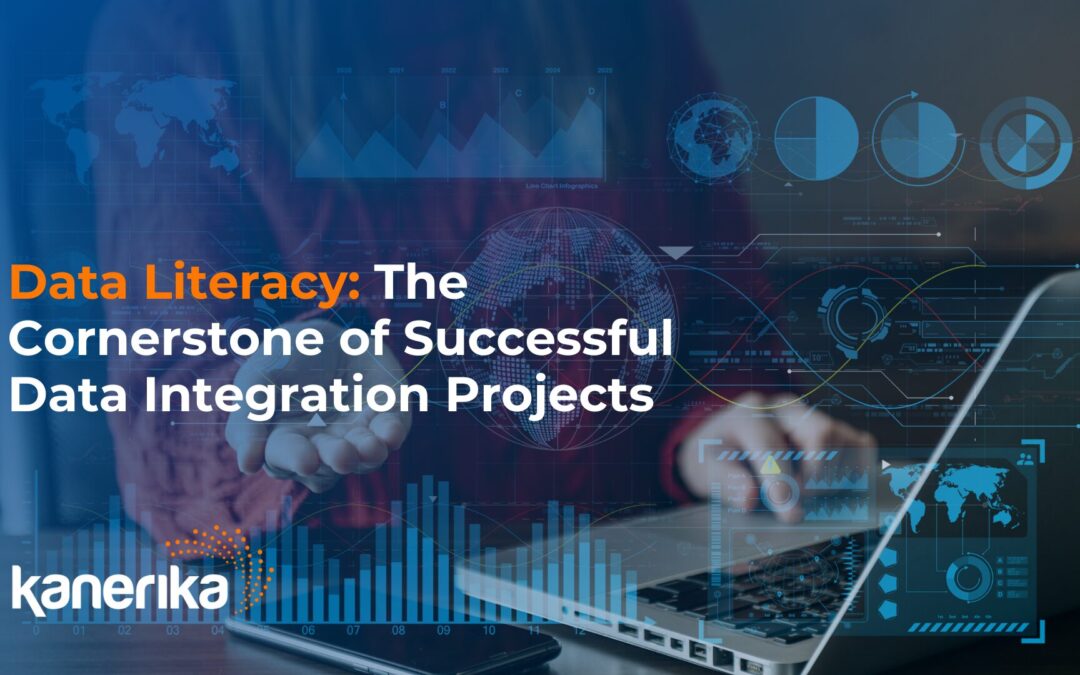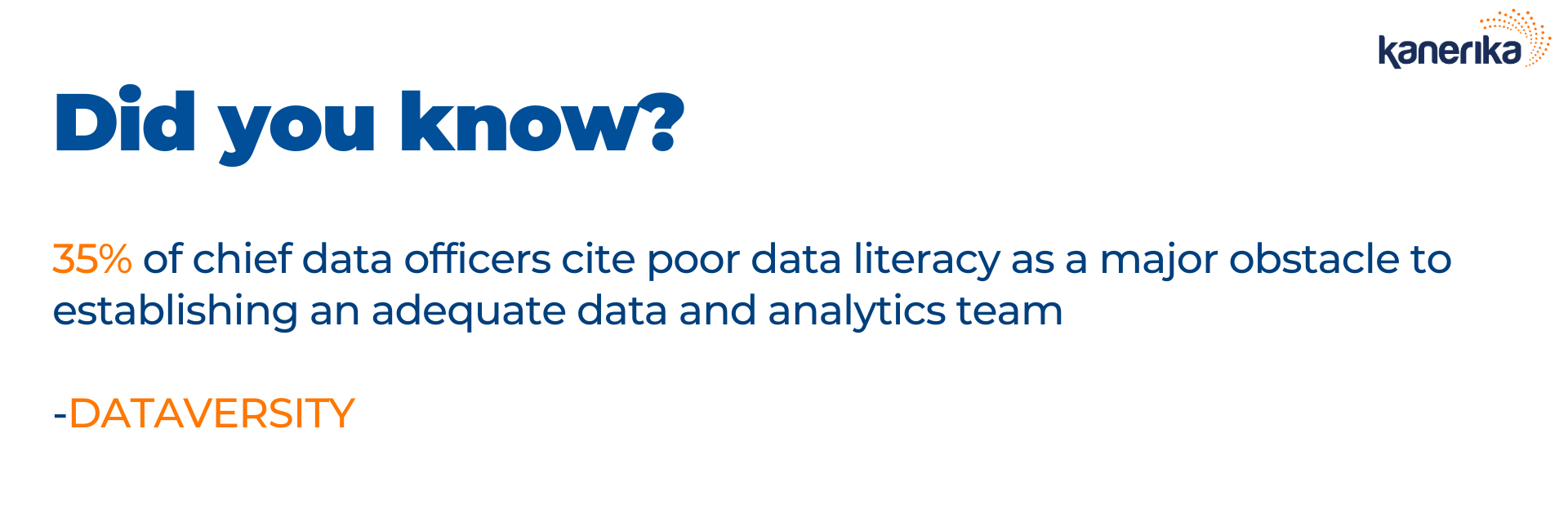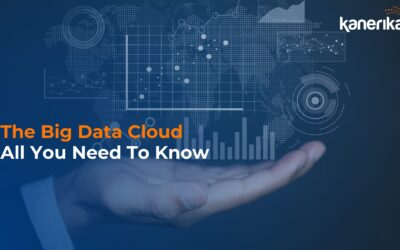In the digital age, data literacy – the ability to read, understand, and effectively communicate data – is crucial for informed decision-making at all organizational levels. The success of data-driven strategies hinges on how well employees comprehend and utilize data. Without proper use and understanding, data’s potential is wasted, impacting the entire work cycle. Non-data professionals must learn to interpret and apply data to enhance decision-making.
Implementing data literacy involves identifying areas where data is underutilized due to communication gaps and educating on its importance for the company’s success. Accessible, well-analyzed, and shared data across the organization, supported by tools like data visualization dashboards, can foster a data-first culture. Leadership commitment to using data insights for decision-making and new product or service validation is essential.
It also plays a pivotal role in data integration projects, which typically fall into two categories: isolated instances within a single division and cross-divisional efforts to standardize data across the organization. The former risks limiting data literacy to a few employees, while the latter requires significant standardization of architectures, data models, and business processes.
Often, the impetus for these integration efforts arises from exposure to data-related risks, highlighting the need to address data anarchy. Developing a high level of literacy is, therefore, essential for successful data integration and the overall health of an organization’s data management.
What is Data Literacy?
Data literacy is the ability to understand, analyze, and interpret data. It involves having the skills to gather, organize, and evaluate data to make informed decisions. Data literacy is becoming increasingly important in today’s data-driven world as the data generated grows exponentially.
Data literacy is not just about being able to read and understand data but also communicating data to others effectively. This includes being able to visualize data in a way that is easy to understand and explain the insights and implications of the data.
Some key components include:
- Understanding data sources and how data is collected
- Knowing how to analyze and interpret data using appropriate tools and techniques
- Being able to communicate data insights to others effectively
- Understanding the ethical considerations around data use and privacy
The Importance of Data Literacy in Data Integration
Data integration is a complex process that combines data from various sources to create a unified view of the data. However, data integration can be challenging, especially when dealing with large datasets from different sources. One of the major challenges of data integration is data literacy.
Data literacy is reading, understanding, analyzing, and communicating data. It is an essential skill that enables individuals to make informed decisions based on data. In data integration, it is crucial because it allows individuals to understand the data they are working with and identify any inconsistencies or errors.
1. Improved data quality:
It enables individuals to identify and correct errors in the data, resulting in improved data quality. This is important in data integration because it ensures that the data being integrated is accurate and reliable.
2. Better decision-making:
It allows individuals to analyze and interpret data, which is essential for making informed decisions. In the context of data integration, data literacy enables individuals to identify patterns and trends in the data, which can inform decision-making.
3. Efficient data integration:
It enables individuals to understand the data they are working with, which makes the data integration process more efficient. This is because individuals can identify which data sources are relevant and which are not, reducing the time and effort required for data integration.
Also Read- What is Data Integration?
Implementing Data Literacy in Your Organization
Data literacy is becoming increasingly important in today’s data-driven world. As an organization, ensuring that your employees have the necessary skills and knowledge to work with data effectively is crucial. Here are some steps you can take to implement data literacy in your organization:
- Identify the specific data skills your employees need to perform their job functions effectively. This could include skills such as data analysis, data visualization, and data management.
- Once you have identified the necessary data skills, train your employees to help them develop these skills. This could include in-person training sessions, online courses, or workshops.
- Encourage a data-driven culture within your organization by making data-driven decisions and using data to drive business outcomes. This will help employees see the value of data and motivate them to develop their data skills.
- Ensure employees have access to the data they need to perform their job functions effectively. This could include providing access to data visualization tools, data analysis software, and databases.
- Encourage collaboration among employees to share knowledge and best practices for working with data. This could include setting up a data community of practice or hosting data-focused events.
Challenges in Data Literacy and Integration
As you continue to work with data, you will encounter various challenges that can hinder your ability to integrate and understand the data effectively. Some of the most common challenges in data literacy and integration include:
- Lack of Data Quality: Poor data quality can lead to incorrect conclusions and decisions. Incomplete, inconsistent, or inaccurate data can be challenging to integrate and analyze effectively.
- Limited Data Accessibility: Access to data can be restricted by various factors, such as data privacy laws, data ownership, and data sharing policies. This can limit your ability to integrate and analyze the data.
- Complex Data Integration: Integrating data from various sources can be challenging, especially when the data is in different formats or stored in other locations. This can make it challenging to combine and analyze the data effectively.
- Limited Data Literacy: A lack of data literacy can hinder your ability to integrate and analyze data effectively. Data literacy involves understanding how to read, interpret, and communicate data effectively. Without this skill, making informed decisions based on the data can be challenging.
- Inadequate Data Infrastructure: Inadequate data infrastructure can make integrating and analyzing data effectively challenging. This can include insufficient storage capacity, slow processing speeds, and outdated technology.
To effectively address these challenges, investing in data literacy programs, improving data quality, and developing robust data infrastructure is essential. Doing so can improve your ability to integrate and analyze data effectively, leading to more informed decisions and better outcomes.
Future of Data Literacy in Data Integration
As data integration continues to become more complex, the need for data literacy is becoming increasingly important. In the future, it is expected that data literacy will be a key skill for professionals in various industries. Here are some ways in which the future of data literacy in data integration may evolve:
- Increased emphasis on training: As the importance of data literacy becomes more widely recognized, companies and organizations are likely to invest more in training their employees to become more data literate. This could include formal training programs, online courses, or other resources that help employees develop the skills they need to work with data effectively.
- Integration into job descriptions: In the future, it is possible that data literacy will become a requirement for many job roles. This could mean that job descriptions include specific data literacy requirements, and that candidates are expected to demonstrate their data literacy skills as part of the hiring process.
- More accessible data integration tools: As data integration tools become more advanced, they are also becoming more user-friendly. This means that professionals with less technical expertise may be able to work with data more easily without needing extensive coding or programming skills. However, this also means that data literacy will become increasingly important, as professionals must understand how to work with these tools effectively.
- Increased demand for experts: As the importance of data literacy grows, there may be an increased demand for professionals who specialize in this area. This could include data literacy trainers, consultants, or other experts who can help organizations develop their data literacy skills.
Kanerika: Your Trusted Data Strategy Partner
Data literacy challenges are becoming increasingly prevalent in today’s digital age. With the vast amount of data being generated and collected, individuals must possess the skills to analyze and interpret this data effectively. Unfortunately, many individuals lack the necessary data literacy skills, leading to misinterpretation of data and, ultimately, poor decision-making.
To overcome these challenges, it is important for individuals and organizations to prioritize data literacy education and training. This can include formal training programs, workshops, and online resources. Additionally, it is important for individuals to develop a data-driven mindset and to seek out opportunities to practice their data literacy skills.
To address these challenges, prioritizing training is essential. This includes formal training programs, workshops, and online resources. Developing a data-driven mindset and seeking opportunities to practice data literacy skills are also crucial steps.
In this context, Kanerika can play a pivotal role in overcoming these challenges. As a data-centric organization, Kanerika offers expertise in:
- Customized Training: Tailoring programs to the specific needs of individuals and organizations.
- Advanced Data Analysis and Integration Tools: Providing cutting-edge tools and technologies to simplify data analysis and integration.
- Expert Consultation: Offering professional guidance to understand complex data scenarios and effective decision-making processes.
- Interactive Workshops and Webinars: Conducting educational sessions to enhance data understanding and application in real-world scenarios.
- Support in Building Data Infrastructure: Assisting in the development of robust data infrastructures to facilitate efficient data integration and analysis
How did Kanerika revolutionize operations for a smart connectivity and mobility services?
Client Introduction:
The client is a leader in smart connectivity and mobility services, specializing in a telemetry analysis platform for connected vehicles. This platform generates valuable data through cognitive analysis, supporting the development of secure, intelligent, and eco-friendly mobility solutions. Their “Plug-Configure-Play” data analytics platform enhances safety, fleet management, and revenue generation, catering to automotive OEMs, EV manufacturers, insurance providers, service providers, government agencies, and innovative connected vehicle businesses.
Here is what Kanerika helped them achieve:

Challenges:
- Integration Difficulties: The default device message structure was misaligned with end customer needs, causing dissatisfaction and integration issues
- Complex Customer Demands: Customers required messages in specific formats, adding complexity and operational delays
- Operational Inefficiencies: Custom data transformation logic was necessary to meet unique requirements, leading to inefficiencies
Solutions:
- FLIP Implementation: Implemented the FLIP platform to provide tailored message translation solutions, optimizing data transformation
- Enhanced Data Conversion: Upgraded FLIP to convert JSON/Excel/Kafka messages into diverse formats, ensuring smooth data flow
- Customized Analytics Tools: Augmented analytics tools with personalized message transformation to enrich business insights and efficiency
Business Impact:
- Enhanced Customization: Allowed better customization to customer-specific needs with minimal code changes through FLIP’s low-code platform
- Improved Performance: Accelerated data processing and message handling with efficient JSON implementations
- Reduced Delays: Significantly decreased time required for data transformations, particularly with bulk data, using FLIP
- Cost Reduction: Achieved substantial cost savings on custom implementations, previously averaging $80 per change













